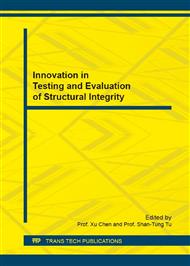p.377
p.384
p.389
p.394
p.399
p.405
p.410
p.419
p.425
Effect of Temperature and Environmental Aging on the Mechanical Reliability of n- and p-Type Thermoelectric Couples
Abstract:
Bismuth telluride-based alloys are the most widely used thermoelectric materials, which can obtain the conversion between heat energy and electricity. As a kind of lead-free solder alloy, Sn96.5Ag3.0Cu0.5 (SAC305) shows great potential in soldering between the thermoelectric element and electrode in thermoelectric couples. Cu/ SAC305 /Ni-plated Bi0.5Sb1.5Te3 (n-type) and Cu/ SAC305/Ni-plated Bi1.8Sb0.2Se0.15Te2.85 (p-type) couples were connected at 250°C by reflow soldering to investigate effects of temperature and thermall aging on the efficiency and reliability of thermoelectric device. Effects of temperature and environmental aging on shear force of thermoelectric couples were studied respectively in the temperature range of 20°C to 180°C. At room temperature of 20°C, n-type thermoelectric couples showed higher shear force than p-type thermoelectric couples. N-type thermoelectric couple showed higher shear reliability than p-type thermoelectric couples after synchronized environmental aging. The shear force of both types of thermoelectric couples decreased with the growth of thermal aging cycles. Finally, the fracture surfaces of two types of thermoelectric couples were investigated respectively using SEM to further analyse the failure mechanism.
Info:
Periodical:
Pages:
399-404
Citation:
Online since:
September 2016
Authors:
Keywords:
Price:
Сopyright:
© 2017 Trans Tech Publications Ltd. All Rights Reserved
Share:
Citation:


